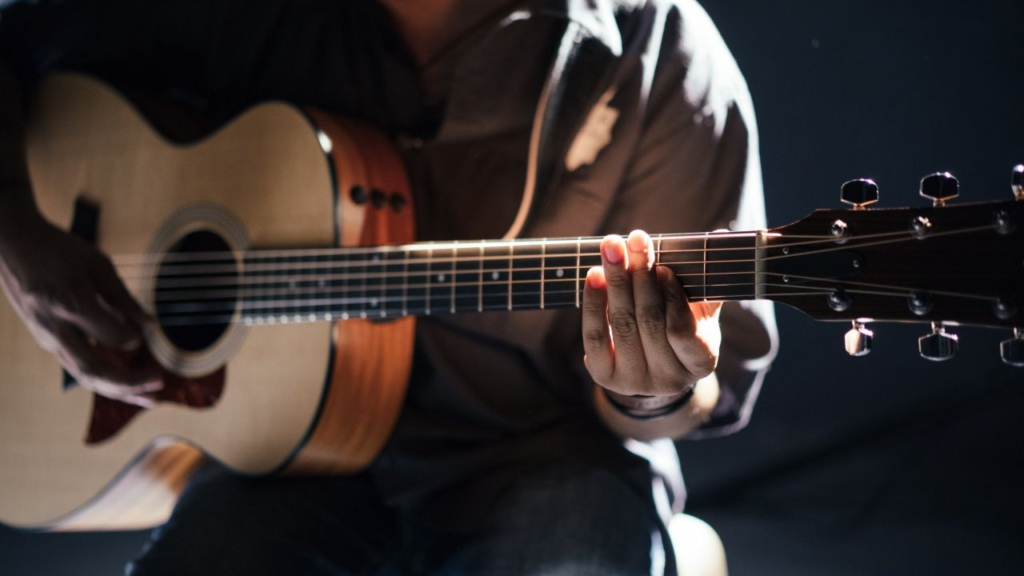Acoustic music has a unique charm that resonates deeply with listeners. Whether it’s the gentle strumming of an acoustic guitar or the soothing melodies floating from a piano, this genre captures emotions like no other. Creating beautiful acoustic music requires more than just talent – it involves understanding its essence, mastering techniques, and crafting lyrics that tug at heartstrings.

If you’ve ever daydreamed about writing your own songs or playing captivating tunes for friends around a campfire, you’re in the right place. With the right tips and tools at your disposal, you can unlock the magic of acoustic soundscapes and elevate your musical journey to new heights. From essential equipment to songwriting tips and recording techniques, let’s dive into how you can create stunning acoustic pieces that resonate with audiences everywhere.
Understanding Acoustic Music
Acoustic music is rooted in authenticity. It embraces simplicity, allowing raw emotions to shine through each note and lyric. The unplugged sound brings a warmth that often feels more intimate than electric genres.
This style emphasizes the natural resonance of instruments. An acoustic guitar or piano, for instance, showcases its unique qualities without heavy amplification. This creates a dynamic range that can shift from soft whispers to powerful crescendos.
The beauty of acoustic music lies in its accessibility. Anyone with an instrument can join in, making it perfect for collaboration and live performances alike.
Lyrical focus is also vital; words become powerful vehicles for storytelling and emotional expression. As you explore this genre, pay attention to how melodies intertwine with lyrics to create deeper connections with your audience. Embrace the essence of acoustic music by experimenting with different sounds and finding what resonates most within you.
Necessary Equipment for Acoustic Music
To create beautiful acoustic music, having the right equipment is crucial. Start with a quality acoustic guitar that resonates well. Look for one with good string resonance and natural reverb to enhance your sound.
Next, consider investing in a reliable microphone for recording. A condenser mic captures the nuances of your performance, ensuring every fingerpicking detail shines through.
Don’t overlook accessories like a capo or tuner; they can elevate your chord progressions and keep everything in tune effortlessly. For those who enjoy layering sounds, adding percussive elements enhances the depth of your arrangements.
If you’re planning on live performances, portable amplification may be necessary to reach larger audiences without losing that unplugged sound. Think about how you’ll record—whether it’s through a simple studio setup at home or during live sessions—each choice impacts your final product significantly.

Tips for Writing Melodies and Lyrics
Creating captivating melodies begins with experimentation. Play around with different scales and intervals on your acoustic guitar. Let the strings resonate, allowing natural reverb to enhance your sound.
For lyrics, focus on emotion first. Jot down feelings or stories that resonate deeply with you. Use vivid imagery to evoke strong emotions in listeners.
Keep melody creation simple at first—embrace minimalistic arrangements. A memorable hook can often be just a few notes repeated effectively.
Don’t shy away from vocal harmony; layering voices adds depth and richness to your piece. Consider how harmonies interact melodically, creating a dynamic range that draws in the audience.
Remember, songwriting tips are subjective. Trust your instincts and allow yourself room for spontaneity while writing. The best songs often emerge when you least expect them!
Techniques for Playing Acoustic Instruments
Mastering acoustic instruments involves exploring various techniques that enhance your sound. For guitarists, fingerpicking is a game changer. This method allows for intricate melodies and can create a rich tapestry of tones.
Experiment with different chord progressions to find what resonates with you emotionally. Try incorporating open chords alongside barre ones to add depth and variety.
For stringed instruments, focus on the nuances of string resonance. The way you pluck or strum can significantly affect the timbre and dynamics of your piece.
Don’t overlook percussive elements either. Tapping on the body of your instrument creates rhythm without needing additional percussion instruments.
Consider using natural reverb in your playing space to enrich your sound further. It adds an ethereal quality that’s perfect for creating immersive acoustic landscapes.

Recording and Mixing Your Acoustic Music
Recording acoustic music requires a thoughtful approach to capture its essence. The choice of microphones is crucial. A condenser mic often works best for vocals, while dynamic mics can bring out the warmth in instruments.
Consider your studio setup carefully. Natural reverb enhances acoustic guitar tones, so experiment with different room placements before hitting record. Mic placement plays a vital role; find the sweet spot where string resonance shines and percussive elements come alive.
When mixing, keep it simple yet impactful. Use minimalistic arrangements that allow each element to breathe. Focus on balancing dynamic range—too much compression can strip away emotional depth.
Don’t forget about layering harmonies during post-production; vocal harmony adds richness without overwhelming the listener. Ensure you maintain an unplugged sound throughout by avoiding excessive effects or digital alterations in your final mix.
Collaborating with Other Musicians
Collaborating with other musicians can elevate your acoustic music to new heights. It opens doors to fresh ideas and unique sounds that you might not explore on your own.
Whether it’s joining forces with a lyricist or teaming up with another instrumentalist, each collaboration brings its own flavor. The blend of diverse backgrounds enriches the songwriting process, leading to more dynamic chord progressions and vocal harmonies.
Don’t shy away from different genres either. Mixing styles can produce unexpected soundscapes that resonate well in an unplugged setting. Experimenting together encourages creativity and spontaneity.
When working as a team, communication is key. Share your vision while being open to feedback. This exchange often leads to innovative techniques like fingerpicking patterns or percussive elements that add layers of texture.
Remember, every musician brings their emotional depth into the mix; this creates a richer experience for both creators and listeners alike.

Promoting Your Acoustic Music
Promoting your acoustic music requires creativity. Start by showcasing your songs on social media platforms like Instagram and TikTok. Use short clips to capture attention, emphasizing the unplugged sound that defines your style.
Consider live performances as a way to connect with audiences. Local coffee shops or open mic nights can be perfect venues for sharing your melodies and lyrical focus.
Don’t underestimate the power of collaboration. Partnering with other musicians can expand your reach and introduce fresh elements to your compositions. Vocal harmony adds richness, while dynamic range from various instruments creates engaging soundscapes.
Utilize online platforms for distribution. Services like Bandcamp or SoundCloud allow you to share recordings easily while connecting with listeners worldwide. Engage in relevant forums and communities focused on acoustic music, where you can find an audience eager for new sounds.
Don’t forget about email newsletters to keep fans updated on releases and upcoming shows!
Conclusion
Creating beautiful acoustic music is an enriching journey that combines skill, creativity, and passion. By understanding the essence of acoustic music and equipping yourself with the right tools, you can lay a solid foundation for your sound.
Writing melodies and lyrics becomes a personal reflection when you focus on emotional depth and lyrical themes. Utilizing techniques like fingerpicking on your acoustic guitar adds texture to your compositions while exploring chord progressions enhances their harmonic structure.
Recording in natural reverb settings can elevate your tracks significantly. A thoughtful studio setup combined with proper mic placement captures string resonance beautifully, allowing every note to shine through. Don’t overlook the importance of dynamic range; it brings life to both live recordings and polished studio sessions.
Collaboration opens doors to new ideas and fresh perspectives in songwriting. Working with other musicians fosters creativity that could lead to unexpected soundscapes or percussive elements enriching your arrangements.
Promoting your work effectively ensures that listeners appreciate all the nuances you’ve poured into your craft. Whether sharing online or performing unplugged gigs, showcasing authentic performances resonates well with audiences hungry for genuine artistry.
Embrace these tips as stepping stones on your path toward crafting memorable acoustic pieces filled with emotion and artistry.
Stay tuned for more such content, only on QAWire


